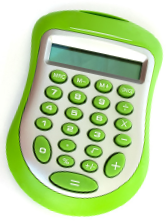This problem solving activity has a number and algebra (patterns and relationships) focus.
What is the remainder when 1111 is divided by 7?
What is the remainder when 1111111 is divided by 7?
What is the remainder when 111.. (100 ones)...111 is divided by 7?
- Use a calculator efficiently.
- Devise a strategy to solve a number problem involving remainders.
- Devise and use problem solving strategies to explore situations mathematically (be systematic).
This problem explores patterns of divisibility in numbers. As such it is similar to the problem Powers of 7, Level 5 Number. In both these problems, as the numbers increase in some way, the pattern of the remainder goes round and round. The students must find where the pattern starts, and identify how it continues.
It would be an advantage if students have a calculator with a fraction facility.
The theory underpinning the problem begins to have extensive applications in university number theory courses.
The Problem
What is the remainder when 1111 is divided by 7?
What is the remainder when 1111111 is divided by 7?
What is the remainder when 111.. (100 ones)...111 is divided by 7?
Teaching Sequence
- Introduce the problem by playing a game of "guess the number" using divisors and remainders. For example:
I am a number less than 100.
Clue one: When divided by 5 I have a remainder of 4
Clue 2: When divided by 2 I have no remainder
Clue 3: When divided by 12 I have a remainder of 4. - When the number (64) is guessed ask the student to explain how they worked it out and if at that point they were "convinced".
- Play a couple more games.
- Pose the first part of the problem. Encourage students to work systematically.
- Share approaches. If the students have chosen to use calculators ask them to explain the method they used. Also ask them to reflect on whether and why this is an efficient use of the calculator. (We think it is).
- Pose the rest of the problem.
- Allow students time to think about the problem and discuss it before sharing ideas as a class.
- Share ideas for solving the problem.
- As the students work on the problem ask them to explain the strategy that they have selected and how they are keeping track of the solution. Also check that they understand how to apply the repeating pattern of the remainders.
- Share solutions.
Extension
- What is the remainder when a number with n digits, all of which are 1, is divided by 7?
- Is there some number made up of n 1s which is divisible by 2, 3, 4, 5, 6, 8, or 9?
Solution
Since 1111 = 7 x 158 + 5, the remainder is 5.
Since 11111111 = 7 x 15973 + 4, the remainder is 4.
This last number gives us a clue as to how to proceed. Clearly 111111 = 7 x 15873 is divisible by 7. In that case 11111100000 is divisible by 7. So 111111111111 = 111111000000 + 111111 is divisible by 7 and so on. This means that we should break down the hundred ones into groups of 6.
![]()
How many are left at the end? 100 = 6 x 16 + 4, so there are four 1s left over. We know that the remainder on dividing 1111 by 7 is 5. So the remainder on dividing a hundred 1s by 7 is also 5.
Solution to the Extension
(1) Let N be the number with n 1s. To find the answer in general we just need to find the possible numbers of 1s left after dividing by 6. Hence
n = 6k Here N has no remainder on dividing by 7.
n = 6k + 1 Since 1 divided by 7 has a remainder of 1, then the remainder here is 1.
n = 6k + 2 11 has a remainder of 4 and so does n.
n = 6k + 3 111 has a remainder of 6 and so does n.
n = 6k + 4 1111 has a remainder of 5 and so does n.
n = 6k + 5 11111 has a remainder of 2 and so does n.
In table form this can be summarised as follows:
form of n | remainder |
6k | 0 |
6k + 1 | 1 |
6k + 2 | 4 |
6k + 3 | 6 |
6k + 4 | 5 |
6k + 5 | 2 |
(2) Clearly 2 will not work. This is an even number and any number of 1s together is going to give an odd number. An even number can’t divide an odd number.
The same applies to 4, 6, or 8.
What about 3? Now N is divisible by 3 if and only if the sum of the digits of N is divisible by 3. The smallest N that will work is therefore 111 because 1 + 1 + 1 = 3 is divisible by 3.
What about 5? If N is divisible by 5 then the last digit of N has to be 5 or 0. So 5 won't work either.
That leaves 9. As for 3, N is divisible by 9 if and only if all the digits of N sum to a number that is divisible by 9. We get such a number with nine 1s. So N = 111111111 is divisible by 9.
